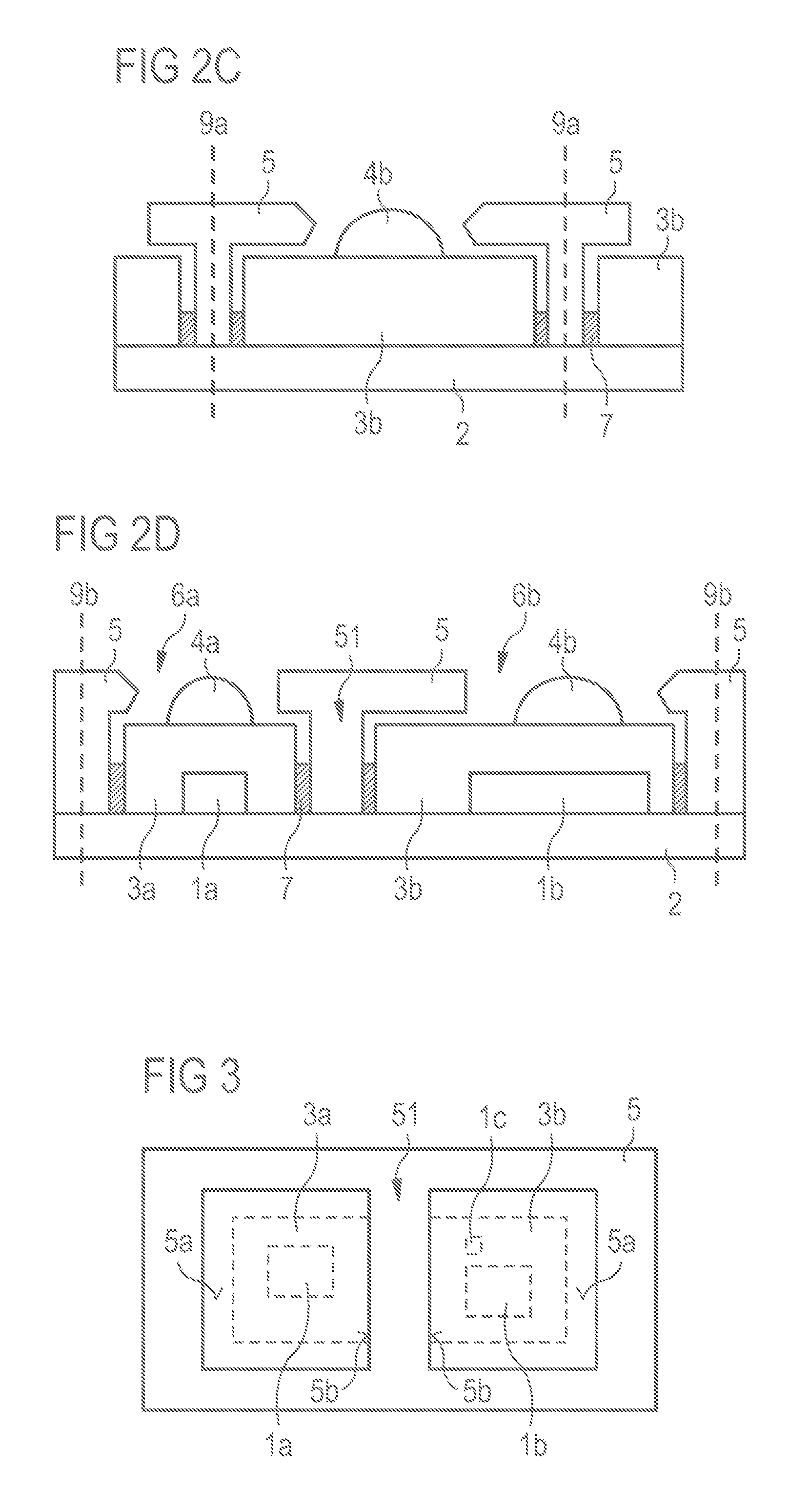Method for producing a plurality of optoelectronic semiconductor components in combination, semiconductor component produced in such a way, and use of said semiconductor component
a technology of optoelectronic semiconductors and semiconductor components, which is applied in the direction of wave based measurement systems, instruments, and reradiation, can solve the problems of disadvantageous increase in production costs and production time, and achieve the effect of cost-effective and time-efficien
- Summary
- Abstract
- Description
- Claims
- Application Information
AI Technical Summary
Benefits of technology
Problems solved by technology
Method used
Image
Examples
Embodiment Construction
[0048]FIG. 1 shows a cross section of a semiconductor component comprising a carrier substrate 2, on which a radiation-emitting semiconductor chip 1a and a radiation-detecting semiconductor chip 1b are arranged and electrically connected to, for example, conductor tracks on the carrier substrate. In this case, the semiconductor chips 1a, 1b are arranged in a manner laterally spaced apart from one another on the carrier substrate 2.
[0049]The radiation-emitting semiconductor chip 1a has an active layer suitable for generating radiation. By way of example, the radiation-emitting semiconductor chip 1a is an LED which emits radiation in the infrared wavelength frame. The radiation-detecting semiconductor chip 1b has an active layer suitable for detecting radiation and is, for example, a light sensor suitable for detecting radiation in the infrared wavelength range.
[0050]The carrier substrate 2 is, for example, a circuit board, preferably a PCB (printed circuit board).
[0051]The radiation-...
PUM
 Login to View More
Login to View More Abstract
Description
Claims
Application Information
 Login to View More
Login to View More - R&D
- Intellectual Property
- Life Sciences
- Materials
- Tech Scout
- Unparalleled Data Quality
- Higher Quality Content
- 60% Fewer Hallucinations
Browse by: Latest US Patents, China's latest patents, Technical Efficacy Thesaurus, Application Domain, Technology Topic, Popular Technical Reports.
© 2025 PatSnap. All rights reserved.Legal|Privacy policy|Modern Slavery Act Transparency Statement|Sitemap|About US| Contact US: help@patsnap.com



